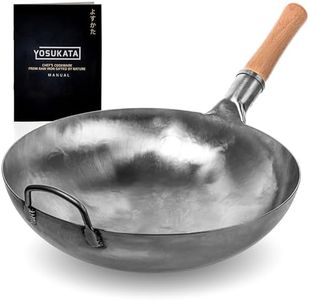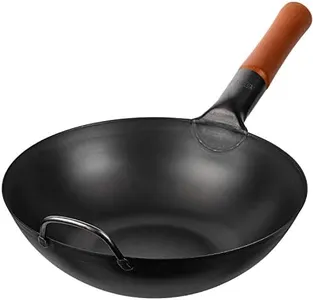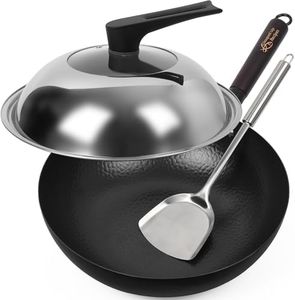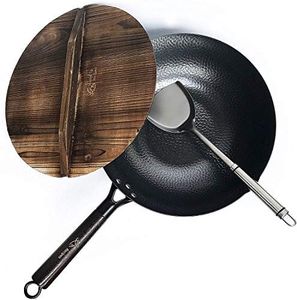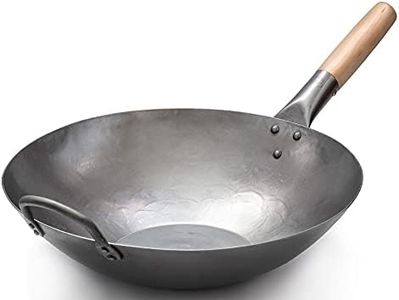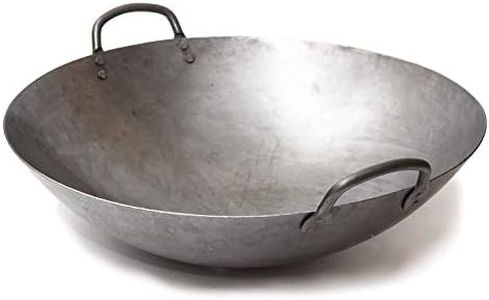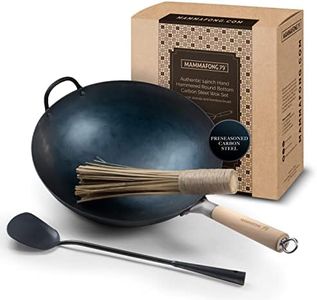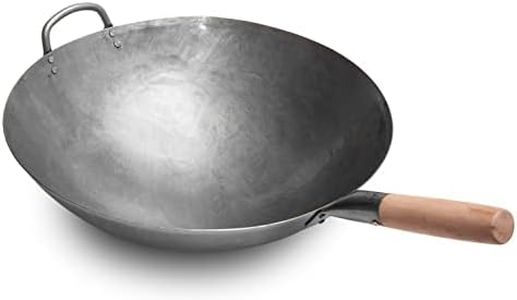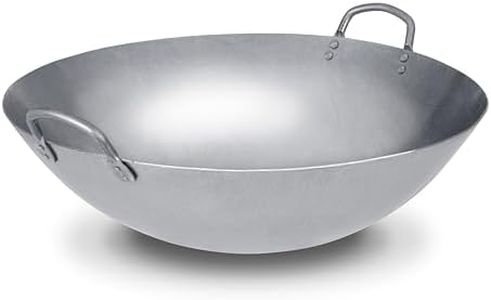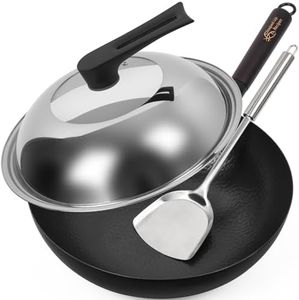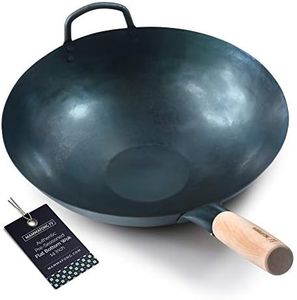We Use CookiesWe use cookies to enhance the security, performance,
functionality and for analytical and promotional activities. By continuing to browse this site you
are agreeing to our privacy policy
10 Best Carbon Steel Woks
From leading brands and best sellers available on the web.Buying Guide for the Best Carbon Steel Woks
Choosing a carbon steel wok is a great choice if you want to cook Asian cuisine at home or simply enjoy stir-frying. Carbon steel woks are favored for their responsiveness to heat, light weight, durability, and ability to develop a natural non-stick surface with proper seasoning. To get the best fit for your cooking needs, it’s important to understand the key features that affect how the wok performs and how easy it is to use.DiameterThe diameter of a wok refers to how wide it is across the top. This is important because it determines how much food you can cook at once and how easy it is to toss or stir ingredients. Smaller diameters, like 10-12 inches, are good for cooking for one or two people and are easier to handle and store. Medium-sized woks, around 13-14 inches, are the most versatile, suitable for families or small gatherings. Large woks (15 inches and above) are meant for batch cooking or entertaining. Your choice should depend on how many people you usually cook for and the size of your stovetop.
Shape (Flat-Bottom vs. Round-Bottom)Woks come in flat-bottom or round-bottom designs. Flat-bottom woks are designed for modern stovetops, especially electric and induction ones, where stable contact with the heating surface is needed. Round-bottom woks are more traditional and ideal for gas stoves with wok rings. The shape affects how heat is distributed and how easy it is to stir-fry; round-bottom woks heat up the sides better, but flat-bottoms are more practical for most home kitchens. Choose the shape based on your stove type.
ThicknessThe thickness of the carbon steel used in the wok can affect how it cooks and feels. Thinner woks (about 1.2 mm) heat up and respond very quickly to temperature changes, but may warp more easily and don't retain heat as well. Thicker woks (around 1.5-2 mm) are sturdier, hold heat better, and distribute it more evenly, but are heavier. For most home cooks, something in the middle offers a good balance of quick heating and durability. Consider your physical strength and how quickly you like to cook when choosing thickness.
Handle TypeWoks can have different handle styles—long stick handles, double loop handles, or a combination. A single long handle, often with a helper loop, is common in Western-style woks and makes tossing and stirring food easier. Two short handles (loops) are more traditional and make it easier to lift a heavy, filled wok, but less convenient for tossing. Your cooking style, wrist strength, and where you plan to store the wok can help guide your handle preference.
Seasoning RequirementsCarbon steel woks require seasoning—a process of building up a thin layer of oil that bonds to the metal, creating a natural non-stick coating and protecting against rust. Some woks come pre-seasoned, so you can start cooking right away, while others require you to season them yourself. Pre-seasoned woks are convenient and great for beginners, while unseasoned woks allow more control over the process. If you enjoy kitchen projects and want to develop a deep patina over time, seasoning your own wok can be satisfying. If you want quick results, look for pre-seasoned options.
WeightThe weight of a carbon steel wok contributes to how easy it is to maneuver when tossing ingredients, but heavier woks provide more stability on the stove. Lighter woks are easier to handle, especially for those with less wrist strength, but may require more skill to keep stable on the burner. Heavier woks are more stable but can be tiring if you often lift or toss your wok. Choose the weight based on your comfort and how you plan to cook.

